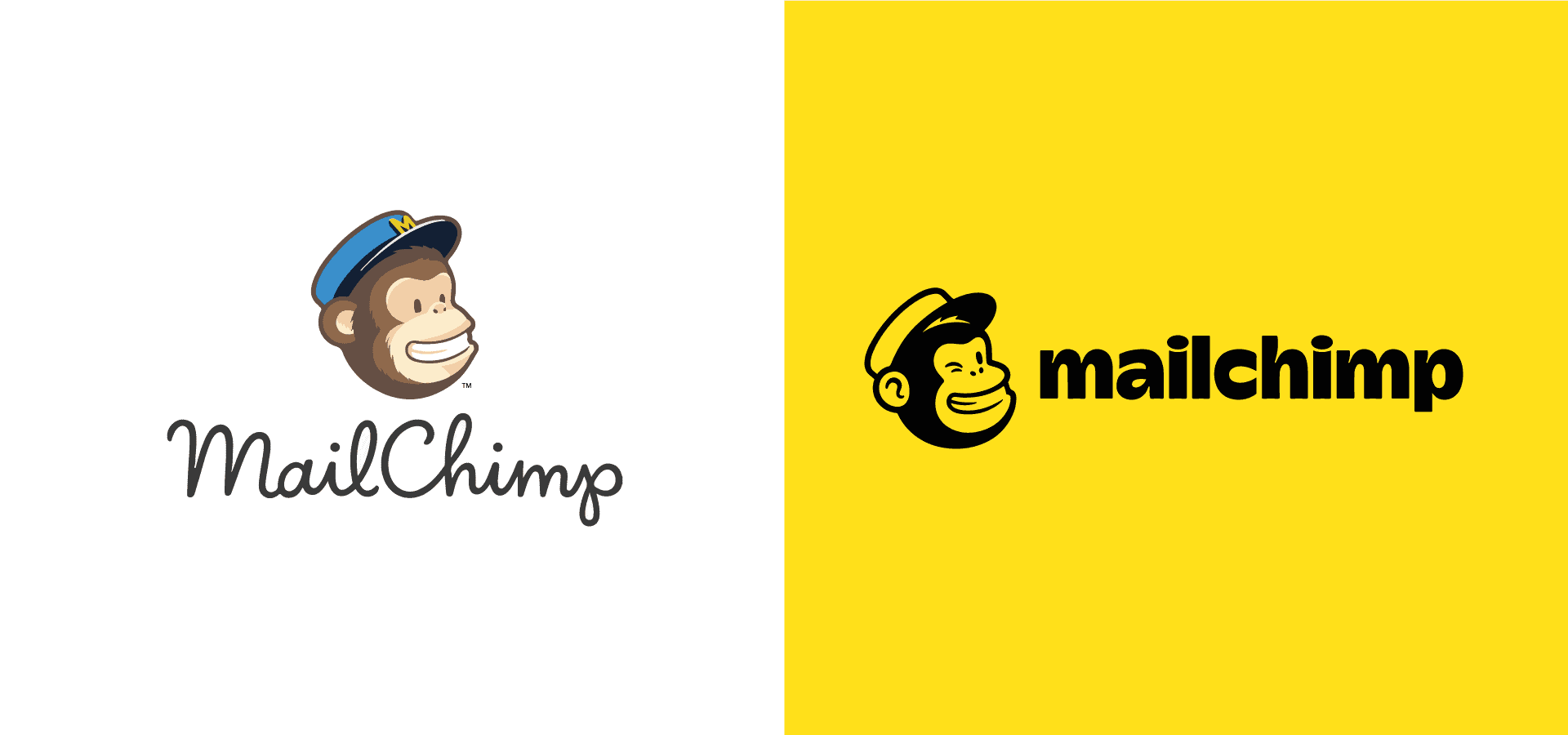With the growth of a company, the need to rebrand and develop a totally new brand identity or revision of the existing one emerges.
Mailchimp introduced a new identity designed yesterday, which came with a drop in the script type, a more prominent identity for the brand.
Mailchimp’s script logo has always been a favourite to many with its personality and quirkiness. it got updated with a sans-serif typeface. This marks the shift to the most widely used typeface in corporate identity – sans serif.
Related: How To Choose The Right Typeface A Comprehensive Guide
Elements like our logo, colour palette, and typography when kept consistent, ensure that a brand remains recognizable, Mailchimp has kept this among its core components.
Mailchimp has demonstrated its persistent and expressive elements, which have created the brand while maintaining visual harmony. This is what composes its brand framework.
Brief History
Mailchimp a marketing platform for small businesses was established in 2001. Mailchimp started as an email company, but now it does more than that, from automation and ads to landing pages and postcards.
Several factors have played a role in Mailchimp’s success, including its inbound marketing and pricing strategy.
The brand has been widely known over the years as the most popular email campaign and marketing delivery system used by designers, non-designers, and pretty much everyone.
This evolution informed the naming of the brand as Mailchimp and not MailChimp anymore. However, the change of the ‘c’ to lowercase dims to be odd as many would suggest about the wordmark.
New Brand Identity
The New Freddie has been simplified to monochromatic colour, compared to the previous Freddie icon which used to be in colour. This has made it fit various scaling of the icon.
The icon has functioned as the brand’s primary mark.
Mailchimp’s change of the wordmark typeface from the script still remains the major revision for the brand. The wordmark complements the icon with its playful characters building on equity for both.
The design process for creating harmony was adopted in creating a brand identity from iteration to refinement.
The colour palette used in the refinement of Mailchimp’s brand identity is Cavendish Yellow. Yellow is an energetic colour for brand expression in building recognition for clarity and creating a memorable brand.
Mailchimp has adopted a single colour with the purpose to drive consistency across all properties.
In addition, this shade of yellow complements well, especially when paired with black. Other secondary palettes are useful for flexibility and being dynamic.
Conclusion
Mailchimp evolving brand identity has made it adaptive to various size and still remain memorable to Mailchimp users.
Revising your brand logo, colour palette, or typography becomes successful by having it consistent across all channels. This is among the core components to ensure your brand is recognizable wherever it appears.
The choice of typography for your wordmark needs to complement other structural elements to make it easy to shift to a new identity.
Let us know your thought on Mailchimp’s new look with its identity in the comment below.



